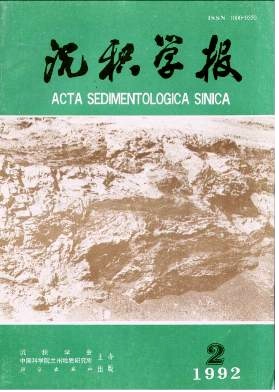Late Paleozoic Sedimentary Formations on Yangtze Platform
- Received Date: 1991-05-10
- Publish Date: 1992-06-10
Abstract: Yangtze Platform was a relatively active one. In Late Paleozoic, there were both stable and relatively active depositional areas on it, resulted in the forming of two different sedimentary formations: the platform type and the intraplatform trough type. Inplatform type of formation region, five majof formations can be subdivided according to rock assembleage in different areas: A) nonmarine- alternately marine and nonmarine- marine clastic formation; B) marine carbonate formation; C) alternately marine and nonmarine cabonate- clastic formation; D) alternately marine and nonmarine, coal-bearing clastic formation; and E) nonmarine volcanic rock-volcaniclastic rock formation. The intraplatform trough type can be detailly classified to five major formations: A) silicalite- siliceous mudstone formation; B) mudstone- marl- silicalite formation; C) limestone-silicalite formation; D) mudstone-marl formation; E) vocanic rodk for- malion. In Late Paleozoic, distribution characteristics of sedimentary formations in space and time on the Yangtze Platform were clossly related to crustal activity, tectonic background and paleogeography. In the early stage of Early Devonian, nonmarine clastic formation was widely distributied owing to the influence of the Caledonian movement. In middle Devonian, the area of transgression was widening, and marine carbonate formation began to be formed. Alternately marine and nonmarine clastic formation and marine clastic formation deposited in the shore areas near old-land. Intraplatform trough type of formations were formed on the carbonate platform in Guangxi, Hunan and Guangdong region. In Late Permian, Yangtze Platform was generally raised. Alternately marine and nonmarine, coal-bearing clastic formation was formed. Marine carbonate formtion and coal-bearing cabonate formation were formed gradually toward the center of basin. Spreading law of sedimentary formtions on the Yangtze Platgorm was not synchronously. Three sedimentary formation cycles are generally developed on Yangtze Platform, and every cycle was evoluled from clastic formation to carbonate formation. But there was only one sedimentary formtion cycly developed in Mianzhou, Sichuan and Liucheng, Guangxi. Indicates that the crustal was in a long stable stage in these two areas. In a given tectonic structure unit, pilling-up sequences of sedimentary formations can reflect the development feature of crustal activity and the process of geological history. The types of sedimentary formations in Paleozoic on Yangtze Platform were formed in a certain period of crustal development in a certain tectonic structure units. They were the products of crustal movement. he major activities of crustal were regional elevation and subsidence movement and local extensional action. The regional elevation and subsidence movement resulted in the elevation and subsidence of sea level as well as transgression and regression, it also controlled the forming, spreading character and developing degree of different sedimentary formations- The local extensional action resulted in the forming of aulacogen, fault depression and paleofift basins, it also controlled the forming and development of intraplatform trough formations. Rock assembleage and the developed degree of intraplatform trough sedimentary formations in Guangxi, Hunan and Guangdong arc closely related to the evolution stages of aulacogen: its occurrence, development, weakness and disappearance.
| Citation: | Chen Zhiming. Late Paleozoic Sedimentary Formations on Yangtze Platform[J]. Acta Sedimentologica Sinica, 1992, 10(2): 1-8. |






 DownLoad:
DownLoad: